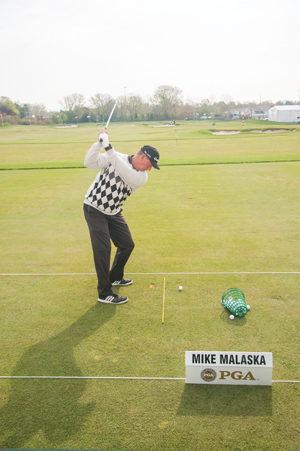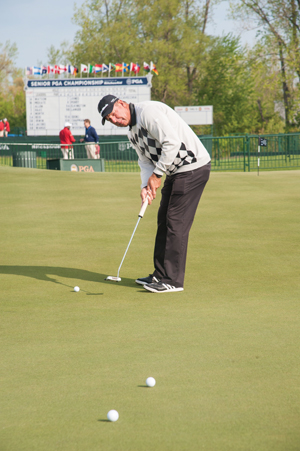
2011 PGA Teacher of the Year Mike Malaska, the worldwide director of instruction for the Nicklaus Golf Academies and the director of instruction at Superstition Mountain Golf and Country Club in Superstition, Arizona, and Las Sendas Golf Club in Mesa, Arizona, is the author of the new book “I Feel Your Pain.”
As a golf instructor, you want your students to play to their potential and shoot decent scores. But I think we should stop trying to fix them and spend more time teaching people how to play the game with the skills they have. That means encouraging people to play the game, along with offering more playing lessons and teaching people how to prepare themselves for a round of golf. The most important thing we can do as teachers is help our students figure out a strategy to get the most out of their golf game, and then help them execute that strategy.

I’ve started playing more tournament golf to make sure I’m in touch with how my students feel on the course, which in turn has made me a much better teacher. I also qualified for the Senior PGA Championship presented by KitchenAid this year. This competitive experience has reinforced a three-step warmup process that I am now teaching my students to help them prepare for rounds of competitive and recreational golf.
Getting loose

The first thing I teach my students to do is get loose. It’s best to start with the hipsand shoulders, which gets your blood flowing into your biggest muscles and warms the entire body. I make sure my students know not to start with rotational movements – if you start with rotation, you’re starting with the most complicated, stressful movements your body will make during golf. Instead, make sure your students start with some squats and shoulder stretches then move on to light rotation. The cold stretching I see many golfers doing on the first tee has little value, but warming up the right way – and in the right sequence – will give your student’s body a better chance of feeling right when they start swinging a golf club.

Find tempo with the putter
After getting warm, the next step is finding what tempo your student has that day. Jumping right into hitting a pile of range balls isn’t the best way to do that. Instead, I teach my students to go to the putting green and hit a series of putts – longer than 10 feet, less than 30 feet – to get a feel for their tempo. I’ll have them drop three balls on the green and hit the first one with a comfortable, easy tempo. Then I have them attempt to repeat the same tempo with the next two putts, trying to stop the ball near where the first ball came to rest. As a player, this helps me get a good, smooth feeling in my hands and arms, which prepares me to head for the range.

The importance of tempo
The key to playing tournament golf is tempo. Tour professionals are masters at maintaining tempo from the range to the course, and throughout a round. But for amateurs, they might hit the ball well on the range then unconsciously speed way up or slow way down on the course. When that tempo breakdown occurs, then their timing no longer works with the swing they had going on the range. Helping them gear their warmup time around finding the tempo they have that day – and it does vary for all of us from day to day – is an essential step in playing better, more consistent golf on the course.
Working with what you have
Once the warmup is done, your students are ready to go to the first tee with a good feel for their tempo and for the types of shots they have access to that particular day. What I preach to my students — and what I’ve certainly found to be true for me on the golf course — is that you can’t try to be somebody or something that you’re not. It doesn’t matter if you’d like to hit a high fade; if your ball flight is a low draw today, use what you have instead of fighting it. If you maintain tempo and keep the ball on the grass, you should be able to get the ball around and shoot a good round — and have fun doing so.

Taking tempo to the range
Once my students feel comfortable with their tempo on the putting green, I want them to head to the practice range. Instead of starting with a wedge, as many players have been taught, I want them to go the other direction and start with a few driver swings. I find that making a few smooth driver swings helps carry over their putting tempo to their full swing. They shouldn’t be swinging from their heels – I want them to make a full, smooth swing at a roughly half their normal power. That means they’re not hitting the ball very far, and they’re not trying to swing hard. They’re just trying to groove that tempo and hit the ball solid a few times. Then it’s time to take out a 6- or 7-iron and start hitting a few balls at full speed. Why an iron and not a wedge? Because a wedge has so much loft that you seldom see much sidespin or shot curvature on a wedge shot. At this point in the warmup, your student needs to see what his or her swing is producing in terms of sidespin: Is the ball drawing or fading at all? Once you get past an 8-iron, you should have an iron that will give a good indication of the shots your student will be hitting for the rest of the day at a comfortable tempo. When students have determined their shot shape for the day, then they should go down to their wedges and hit a few shots with each club.


